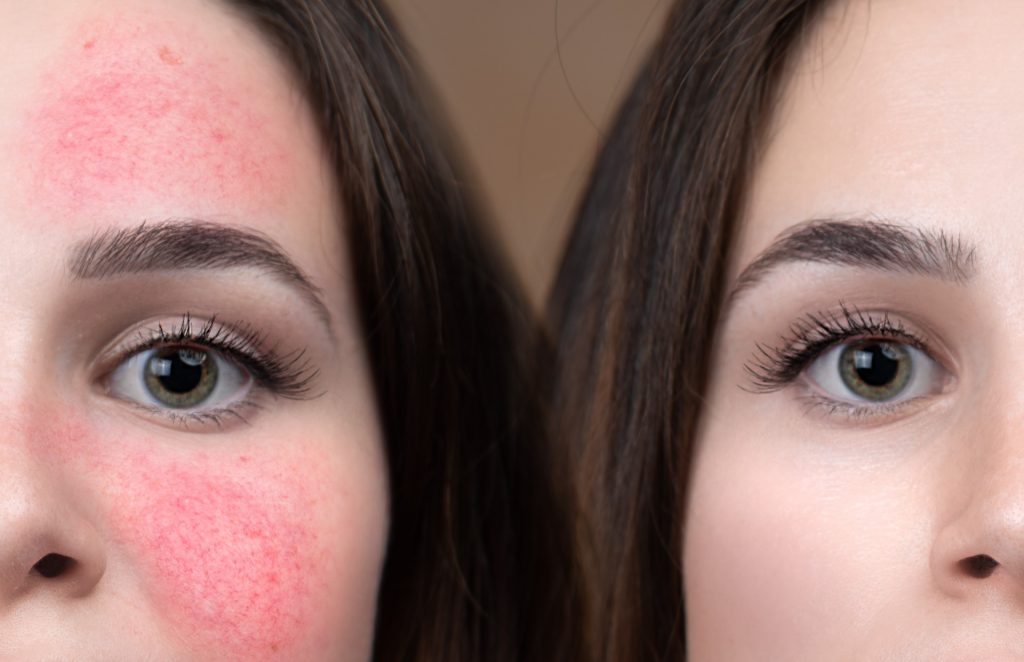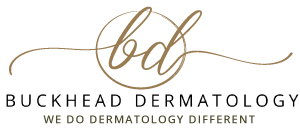There’s Nothing Rosy About Rosacea

There’s Nothing Rosy About Rosacea
Rosacea is more widespread than most people even realize. It causes inflammation of the skin, resulting in redness, flushing and sometimes pimple like bumps. Rosacea is extremely common, typically occurring more in women than men. It tends to be more active between the ages of 30 and 50. However, some cases have prolonged symptoms. There are plenty of over-the-counter treatments for rosacea. Still, often lifestyle and diet modification can have significant effects, while more severe cases will only see results when being treated by a licensed dermatologist. There are laser treatments and topical medicinal treatments that should only be provided by a reputable and licensed skin care professional.
Lifestyle Changes
Rosacea is often triggered by environmental and dietary factors. Triggers are unique to each person. What else is unique is the severity of the reaction to that trigger and how the skin reacts to multiple triggers simultaneously. Common triggers are over-exposure to the sun, hairspray, extreme hot or cold temperatures, stress, alcohol, and foods that are spicy or contain certain spices that are themselves triggers. In some mild cases, limiting or eliminating these common triggers may prevent the condition. Clearly, it is more challenging to take the stress out of the picture than hot salsa, but knowing the triggers is beneficial for anyone experiencing the symptoms of rosacea. You may have experienced or witnessed someone flushing in moments of embarrassment, and the symptoms dissipate once removed from that situation. This is likely rosacea! More than 95% of those diagnosed with rosacea had any idea about the skin condition, its commonality, and that most triggers can be managed, as well as alternative treatments for those with more severe cases.
In more severe cases, professional advice and treatment from a dermatologist’s office take the guessing out of what works and help immediately manage skin concerns caused by rosacea. Exceptional skincare providers work with clients to identify triggers that allow a multi-faceted treatment approach.
Risks of Over-the-Counter Treatments
There is always a risk when heading to your local pharmacy to buy something over the counter. The risk is caused partially because of unclear claims products that claim one thing, when someone trying to manage rosacea may need multiple. Another risk is not knowing how the skin will react to topical and over the counter treatments. Often, these products are not strong enough to do what people are hoping for and may have adverse reactions that will require a more urgent diagnosis and treatment from a dermatologist. Seeing a dermatologist is more affordable than people think. There are offices that specifically recognize that everyone can benefit from their expertise and work with all clients to find reasonable solutions. So, if you are experiencing embarrassing or concerning symptoms that may be from rosacea, find a local and established dermatology office and get a consultation to see how they can help. An official diagnosis from someone specializing in skin health is the first step to addressing skin care needs.
Rosacea is Treatable – Now, That’s Rosy News!
Although rosacea is common, affecting more than 3 million people a year, it varies in HOW it affects WHO it affects. It is undeniable that when experiencing symptoms of rosacea, the skin reacts to something (or things), and the severity of each case is unique. It is good news that rosacea is very treatable, whether lifestyle changes, topical medicated creams or serums, or licensed laser treatments from a professional dermatology office. Many with mild cases do not seek professional help to manage the symptoms. Still, those who have consistent acne signs, which may be symptoms of rosacea, may find unexpected relief when taking steps to manage the skin condition. The cases of rosacea that appear as acne-like pimples should not be scratched, itched, or popped. It is critical not to address rosacea as acne since other factors are at play. Irritating the rosacea can lead to infection and worsened appearance.
It is important to note that the removal of common triggers is an excellent first step for anyone with rosacea and may be enough to make the flare ups manageable. Think about moments when flare ups occurred and what may have been a contributing trigger. In some cases, it may be the flavoring or mixer of something ingested that causes the flushing. So, not everything that is a trigger means it has to be removed entirely from the lifestyle. Others may have environmental factors that are triggers that can’t be removed entirely, so finding solutions that work right away without damaging the skin are essential. Knowledge is power, so note anything that seems relevant and take it to your local dermatologist’s office, where they can help decipher the information and provide a treatment plan. The rosy news is that although there is no known cure for rosacea, it is absolutely manageable!
